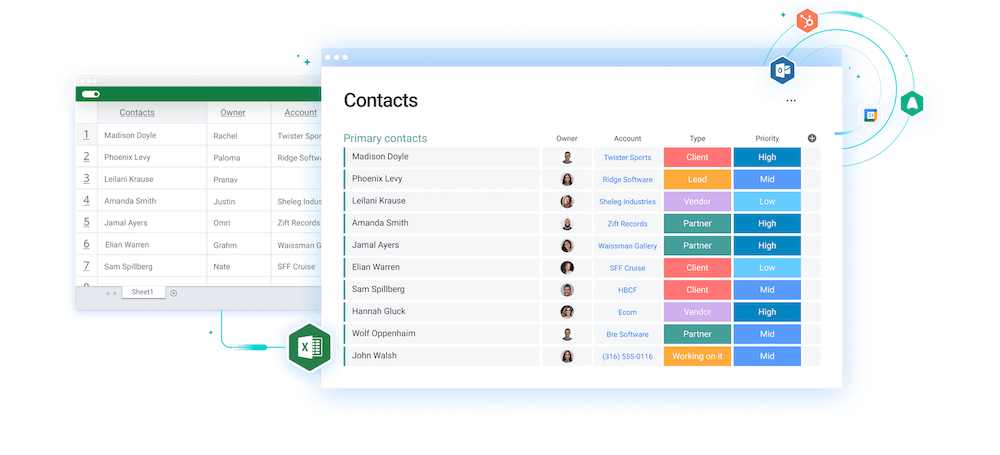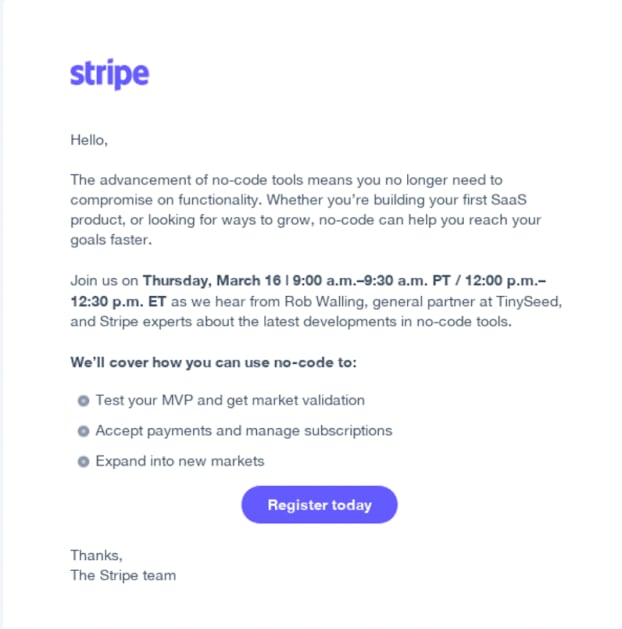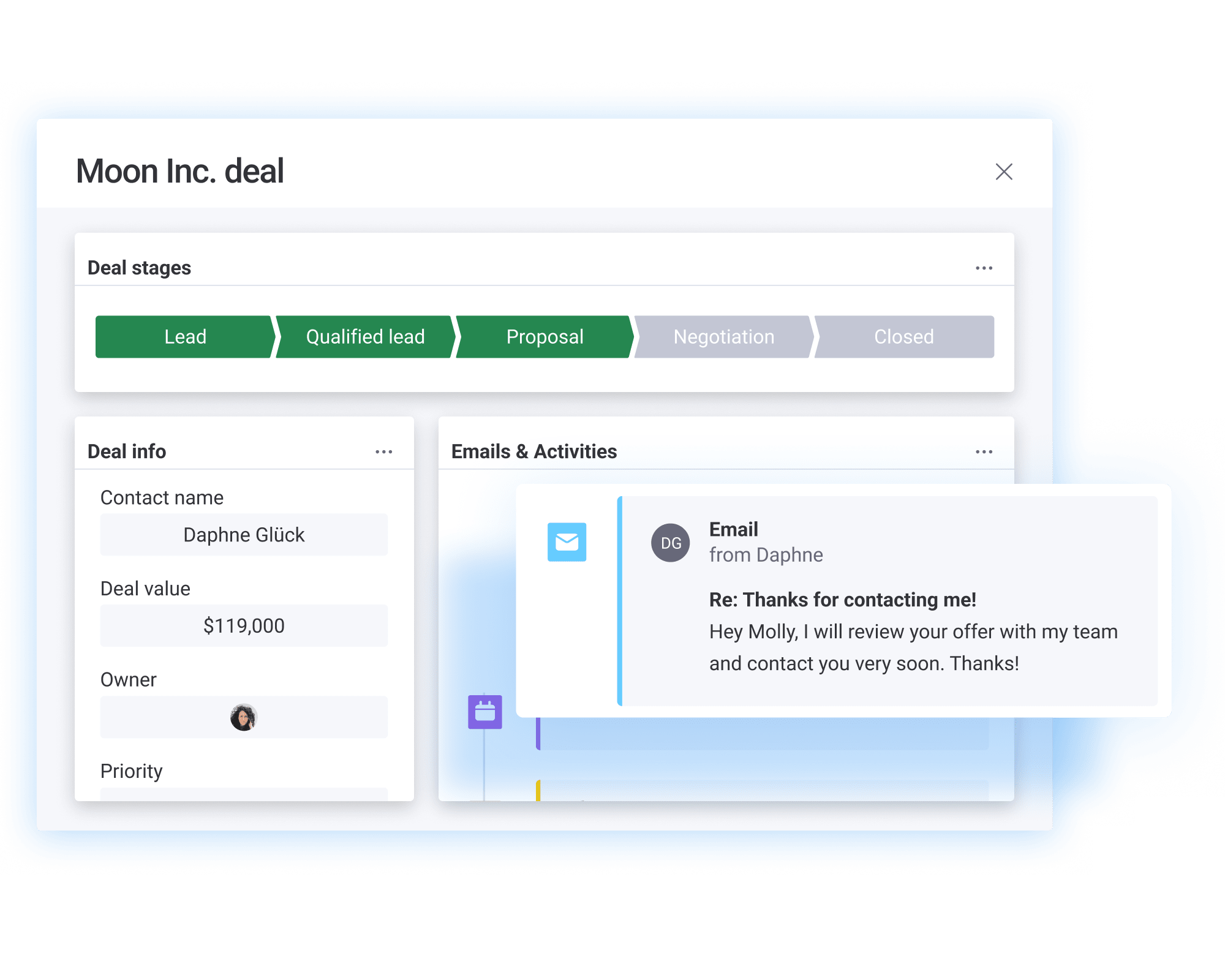Customer attention is fleeting at best. With a sea of new brands vying for your customer’s attention via email each year, making an impression can be a marketer’s toughest challenge.
The good news? Launching an exploration into your campaigns’ email conversion rates can unearth a treasure trove of insights that save you resources and boost your success.
In this article, we’ll dig into:
- What is an email conversion rate and how do you measure it?
- What factors determine your email conversion rate?
- How does it tie into other email metrics?
- 5 strategies to improve your email conversion rate
What is email conversion rate?
Email conversion rate is an important metric that helps determine the success of an email campaign and identify the number of people taking an action after reading the email. This is a common metric used b y marketers to determine their return aginst the investment on a campaign.
Common applications of this include purchases or sign-ups that were a result of your email — this counts as an email conversion.
Your email conversion rate is determined by:
- Audience: your target audience and how well you know and understand them
- Content: the quality and relevance of your email content
- Call to action: if your CTA is clear, well-placed, and encourages your audience to take action
- Deliverability: monitoring if your mass emails are ending up in spam folders or not reaching your audience’s inbox
- Timing: sending emails at the right time to increase the likelihood of engagement and conversion
- Design: layout, imagery, content, and use of color that can impact how your audience perceives your message and influences their actions
How do you calculate the email conversion rates?
Say your marketing team just created a new nurture flow for customers that have been inactive on your work management platform. How will you track its success? There are several metrics you could use, like open rate, but email conversion rate will be a great indicator.
Here’s the formula for how to calculate email conversion rate:
Number of Conversions / Number of Delivered Emails ×100
For example, if you send out 100 emails and 30 bounce, the number of your delivered emails is 70.
If out of these 70 emails, 10 receivers schedule a demo or buy your product — or complete any other goal you have for your email campaign —, your number of conversions is 10.
So your final email conversion rate is 10/70 x 100 = 14.2%.
To understand whether you have a profitable conversion rate, you can use your CRM with email marketing to calculate the difference between email marketing spend and ROI.
You can use monday sales CRM to calculate your email conversion rate with ease — and in the same place you’re monitoring other metrics, projects, and campaigns.
6 ways to increase your email conversion rates
How can you increase email conversion rates? Here are some of the best practices in the industry you can adopt or optimize.
1. Look inward
The first step to boosting your email conversion rates is always to look inward — your CRM software is usually a great place to source this data — and ask:
- How are my customers behaving? Purchase history, browsing behavior, and interactions with your website can help you understand customer behavior.
- What are common customer pain points? Look at support tickets and feedback forms to understand why customers leave.
- What are common seasonal trends? Source engagement data and purchase history over specific time periods to understand seasonality.
2. A/B Test emails to generate insights on conversions
You don’t have to restrict A/B testing to frequency, length, or send times — you can do a lot more.
For example, you can use email A/B testing to understand what extent of personalization works for your audience — the sweet spot between detail-oriented and creepy.
You can even test the order of content that works best by analyzing for:
- Which grouping of features works best
- Where do CTAs have the highest click-through rates
- Which subject lines boost open rates
The key to a successful A/B test is to experiment over and over and analyze the results.
3. Optimize your emails for mobile
If you’re not optimizing your emails for mobile viewing, you’re deprioritizing almost half your audience’s viewing experience. And that translates directly to decreased email conversion rate.
Up to 50% of your email marketing revenue will come from optimized core flowHere’s a quick cheat sheet to optimize emails for mobile:
- Ensure the subject line is between 30-35 characters
- Use a single-column layout so readers don’t have to scroll horizontally
- Keep copy concise and break it up into smaller chunks surrounded by white space
- Use larger fonts to improve readability
- Optimize image size for mobile to speed up loading
4. Personalize your campaigns through segmentation
Segmentation ads relevance and exclusivity to your campaigns. More than selling, it makes your customers feel better acquainted and trustful of your brand — leading to higher conversions and referrals down the line.
Analyzing your CRM data is the basis for effective email segmentation.

With monday sales CRM, you can seamlessly connect all your new and existing data in one place.
Try monday sales CRM5. Create campaigns based on the user’s funnel stage
User journeys are notoriously scattered but that’s excellent news for email marketers pursuing higher email conversion rates. Not only can you experiment with the level of email personalization, you can also create campaigns based on:
- The time since the recipient subscribed to the email list
- Purchase history
- Average order value and type of orders
- Open and click-through rates for previous emails
Doing this allows you to inspire buying behavior by meeting your customers where they naturally are, rather than forcing them through preconceived purchase tunnels.
6. Use a concise CTA
CTAs are arguably one of the most important parts of your campaign — at least while tracking conversions.
Ensure they are well-placed, distinguishable, and in line with the content of your email.
For example, if you want your recipients to book a demo, ensure the body of your email is product-oriented.
In this example by Stripe, the email talks about the topics that will be covered in the webinar with a direct CTA “Register today”.

Track email metrics and create powerful campaigns with monday sales CRM
Higher conversion rates go hand in hand with having a better understanding of your customers. To do this, you need to have email metrics in one place so you can compare, contrast, and iterate.
Use monday sales CRM as your source of truth by using it to:
- Track email open rates: Get notified automatically when a lead opens or replies to an email so that you can follow up at the right time. Solving queries faster and increasing conversions.
- Improved personalization: Save time by sending personalized email templates that autofill based on your prospect’s contact information.
- Know your customer’s journey: Log any lead or contact-related activity like calls, meetings, notes, and more to always know where communication stands. You can use this information to create funnel-specific email campaigns.

FAQs
What is a good email conversion rate?
2%-5% is a reasonable conversion rate, but progressively working towards higher conversion rates can help you influence the company’s bottom line.
How can I improve my email conversion rate?
Use clear CTAs, personalize emails, segment your emails, and A/B test vigorously to analyze which email drives the highest conversions.
What is the difference between Click Through Rates (CTR) and conversion rates?
CTR defines the number of times people clicked on a link, CTA, or image. A conversion rate, on the other hand, indicates how many people are initiating an action.
Organize your most important email metrics for impact
One of the biggest challenges marketers face is having to deal with disorganized customer information — metrics in one place and customer insights in another. This makes it challenging to craft high-converting campaigns.
monday sales CRM gives you a centralized view of customer data. You can track both analytics and metrics to craft email campaigns that lead to higher email conversion rates while reducing the time you spend aggregating data.


